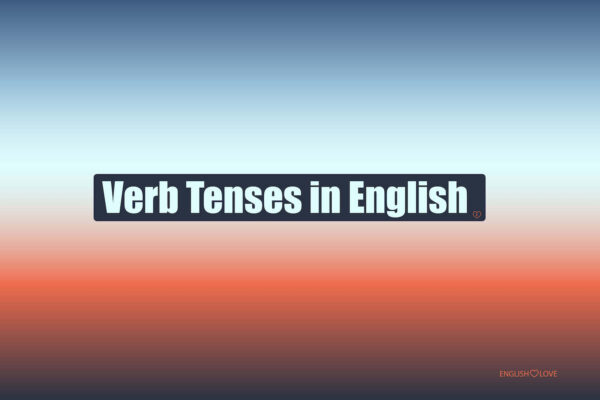As you embark on your English learning journey, you’ll come across various types of phrases. Among these, the prepositional phrase stands out as one of the most prevalent. This guide delves into the essence of prepositional phrases, the techniques to recognize them, the frequent prepositions used in these phrases, and how they differ from other phrase categories.
What is a Prepositional Phrase?
A prepositional phrase is a group of words that begins with a preposition and concludes with a noun, pronoun, or gerund, collectively known as the object of the preposition. These phrases play a crucial role in English grammar as they provide additional information about location, time, manner, cause, or degree.
Prepositions serve to highlight the connection between the noun or pronoun (the object) and other elements in the sentence, often indicating relationships of space, time, or direction. For instance:
- Space/Location: In the sentence “The cat is on the mat,” “on the mat” is the prepositional phrase. Here, “on” is the preposition that indicates the location of the cat in relation to the mat.
- Time: In the sentence “I will meet you after the movie,” “after the movie” is the prepositional phrase. The preposition “after” indicates a time relationship between the meeting and the movie’s end.
- Direction: In the sentence “He walked towards the park,” “towards the park” is the prepositional phrase. Here, “towards” indicates the direction in which he walked.
- Manner: In the sentence “She completed the task with diligence,” “with diligence” is the prepositional phrase. The preposition “with” indicates the manner in which the task was completed.
- Cause: In the sentence “He missed the bus due to the rain,” “due to the rain” is the prepositional phrase. Here, “due to” indicates the reason he missed the bus.
The object of the preposition can be a single noun (“on the mat”), a pronoun (“with him”), or even a more complex structure, like a noun phrase (“in the big red house”) or a gerund phrase (“before going to the store”).
Prepositional phrases can function as adjectives or adverbs. When a prepositional phrase acts as an adjective, it describes a noun, as in “The man with the hat is my uncle.” When it functions as an adverb, it modifies a verb, adjective, or adverb, as in “She reads in the library.”
The Function of Prepositional Phrases
Prepositional phrases serve various functions in sentences, primarily adding detail and depth to the main idea. They can modify nouns, pronouns, verbs, adjectives, and adverbs, providing context that helps readers or listeners get a clearer picture of the situation or action described. Here are some of the primary functions of prepositional phrases:
- Adjectival Function: When a prepositional phrase acts as an adjective, it modifies a noun or pronoun. In this capacity, it answers questions like “which one?” or “what kind of?”
- Example: “The girl with the blue backpack is my sister.”
- Here, “with the blue backpack” describes “the girl,” specifying which girl is being referred to.
- Example: “The girl with the blue backpack is my sister.”
- Adverbial Function: When a prepositional phrase functions as an adverb, it modifies verbs, adjectives, or other adverbs. It can provide information about time, place, manner, reason, or condition.
- Example (Time): “I will go to the gym in the morning.”
- “In the morning” tells us when I will go to the gym.
- Example (Place): “The keys are under the mat.”
- “Under the mat” tells us where the keys are.
- Example (Manner): “She spoke with enthusiasm.”
- “With enthusiasm” describes how she spoke.
- Example (Reason): “He left early due to the rain.”
- “Due to the rain” explains why he left early.
- Example (Condition): “In case of emergency, break the glass.”
- “In case of emergency” sets a condition for the action.
- Example (Time): “I will go to the gym in the morning.”
- Direction or Movement: Prepositional phrases can indicate direction, destination, or movement.
- Example: “The bird flew over the rainbow.”
- “Over the rainbow” indicates the direction of the bird’s flight.
- Example: “The bird flew over the rainbow.”
- Comparison: Some prepositional phrases can be used to make comparisons.
- Example: “She is taller than her brother.”
- “Than her brother” is used to compare heights.
- Example: “She is taller than her brother.”
- Agent in Passive Voice: In passive voice constructions, a prepositional phrase can introduce the agent or doer of the action.
- Example: “The book was written by the author.”
- “By the author” introduces who wrote the book.
- Example: “The book was written by the author.”
- Means or Instrument: Prepositional phrases can also indicate the means or instrument with which an action is performed.
- Example: “She cut the paper with scissors.”
- “With scissors” tells us what she used to cut the paper.
- Example: “She cut the paper with scissors.”
In essence, prepositional phrases enrich our sentences, making them more informative and vivid. They help in painting a clearer picture by providing necessary details about the main idea or action.
Distinguishing Prepositional Phrases from Other Types
Noun phrases, which consist of a noun and its accompanying modifiers or articles, are among the most common phrase types in English. For instance, “the big, brown dog” in “The big, brown dog barked loudly” is a noun phrase. This phrase lacks a preposition, so it’s not a prepositional phrase. Verb phrases, on the other hand, comprise a verb and any auxiliary verbs or adverbs that modify it. In “She will be singing at the concert,” “will be singing” is the verb phrase. Since it doesn’t contain a preposition, it’s not a prepositional phrase. Recognizing different parts of speech will aid in distinguishing various phrase types.
Prepositional Phrases in Complex Sentences
In intricate sentences, discerning prepositional phrases can be more challenging. Such sentences consist of an independent clause and one or more dependent clauses. To identify prepositional phrases in these sentences, first determine the independent and dependent clauses. Then, within these clauses, seek out the prepositions and their objects.
Common prepositions used in phrases
Prepositions are vital components in the English language, often serving as bridges that link different parts of a sentence. They can indicate relationships of time, place, direction, and more. While there are numerous prepositions in English, some are more commonly used than others. Below is a table showcasing some of these frequently used prepositions along with example sentences to illustrate their usage:
| Preposition | Sentence with Example |
|---|---|
| In | The book is in the bag. |
| On | The picture is on the wall. |
| At | I will meet you at the park. |
| With | She is eating with a fork. |
| From | I received a letter from my friend. |
| To | He is going to the store. |
| About | They are talking about the weather. |
| For | She bought a gift for her friend. |
| Under | The dog is under the table. |
| Over | The bird flew over the rainbow. |
| Between | The secret is between you and me. |
| By | The book was written by the author. |
| During | She sleeps during the day. |
| Against | He leaned against the wall. |
| Through | We walked through the forest. |
Examples in Complex Sentences
- “Although she was fatigued, she persisted in working on the project with her team.” Prepositional phrase: “on the project.”
- “After completing his tasks, he retired to bed.” Prepositional phrase: “to bed.”
- “Despite the downpour, they carried on playing soccer in the park.” Prepositional phrase: “in the park.”
- “Prior to the film’s commencement, we’ll dine at the restaurant.” Prepositional phrase: “at the restaurant.”
- “Ever since his job loss, he’s been on the hunt for a new one.” Prepositional phrase: “for a new one.”
In Conclusion
To spot a prepositional phrase, keep an eye out for the preposition and its object. It’s crucial to differentiate prepositional phrases from other phrase types like noun and verb phrases. While they can be trickier to identify in complex sentences, with practice, you’ll be able to spot them with ease. Now that you’re familiar with how prepositional phrases function, it’s time to put your knowledge to the test! Practice by identifying them in various sentences or delve into more detailed references below.
FAQ about Prepositional Phrases in English
What defines a prepositional phrase in English grammar?
A prepositional phrase consists of a preposition followed by its object, which can be a noun, pronoun, or gerund. This combination provides additional information about location, time, or manner in a sentence.
How do prepositional phrases enhance sentence structure?
Prepositional phrases add depth and detail to sentences. They can specify where an action took place, when it occurred, or how something was done, making statements more informative and engaging.
Can a sentence have multiple prepositional phrases?
Yes, sentences can contain more than one prepositional phrase. For example, in the park after the rain, there are two prepositional phrases: in the park and after the rain.
Are there specific prepositions that are more commonly used in these phrases?
While English boasts a wide range of prepositions, some are more frequently found in prepositional phrases. Common ones include on, in, at, with, under, and between.



